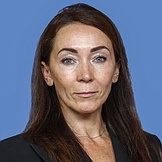Regional flags and emblems


Established 26 January 1943
Capital Kemerovo
The Kemerovo Region – Kuzbass is part of the Siberian Federal District
Area 95,700 sq km
Population 2 526 400 (2025)
Ethnic groups
(2020 National Census, %)
Russian – 95,28
Other – 4,72
Administrative divisions (2024)
Municipal areas – 1
Municipal districts – 17
City districts – 15
Rural towns – 6
Rural districts – 4
Geography and climate
The Kemerovo Region – Kuzbass is located in the southeast of Western Siberia. At its widest points, the region is 500 km north to south and 300 km west to east.
The region borders on the Khakassia and Altai republics, the Altai and Krasnoyarsk territories, and the Tomsk and Novosibirsk regions. The main river is the Tom.
The climate is extremely continental. January is the coldest month and July is the warmest. January temperatures average –13.3°C. July temperatures average 17.9°C.
The region has the Kuznetsky Alatau State Nature Reserve, Shorsky National Park, Tomskaya Pisanitsa open-air Museum Preserve, 16 public nature reserves and 7 nature landmarks.
Government
The legislative branch is represented by the Legislative Assembly of the Kemerovo Region-Kuzbass, which is the permanent, representative and only body of legislative authority in the region. It is elected for a five-year term.
The Legislative Assembly of the Kemerovo Region-Kuzbass has 46 deputies, with 23 deputies running in single-mandate constituencies and the other 23 in the single electoral district in proportion to the number of votes cast for lists of candidates nominated by electoral associations.
The current Legislative Assembly was elected in September 2023. Its term expires in September 2028.
Executive power in the Kemerovo Region – Kuzbass is exercised by the Governor of the Kemerovo Region – Kuzbass, the Government of the Kemerovo Region – Kuzbass, which is the region’s permanent supreme executive body, and other bodies of executive authority. The Government of the Kemerovo Region – Kuzbass is headed by the Chairman of the Government.
The Governor of Kemerovo Region-Kuzbass is the region’s highest-ranking official, who runs the executive branch in the region, forms the Government of the region. He is elected for five years by Russian citizens who permanently reside in the region. The term of office of the current incumbent expires in September 2029.
Economy and natural resources
Industrial output accounts for about 50% of the regional GDP. The region is rich in different types of coal, from brown to anthracite varieties. Kuzbass is the leading coal-producing region in Russia.
The region’s economy is based on exports of raw materials and is strongly dependent on price fluctuations on global markets. The main industries are coal and metals (nearly 50% of the regional GDP).
Kuzbass exports 1,200 types of industrial products: coal, coke, rolled steel, cast-iron, aluminum, zinc, ferroalloys, slate, concrete, glass, nitrogen fertilizers, plastic, chemical fibers, synthetic resins, electrical equipment, heavy machine-building equipment, and others.
The fuel and energy complex is represented by the coal industry and electric power production. The Kuzbass energy system has 8 electric power stations: the Tom-Usinsk Thermal Power Station, Belovsk Thermal Power Station, Yuzhno-Kuzbassk Thermal Power Station, Kemerovsk Thermal Power Station, Novo-Kemerovsk Combined Heat and Power Station, Zapadno-Sibirskaya Combined Heat and Power Station, and Kuznetsk Combined Heat and Power Station. Coal is the main fuel.
Mineral extraction is carried out at developed deposits of coal, iron ore, polymetallic ores, gold, manganese ores, high-alumina rocks, quartzite, mercury, cerium-group and yttrium-group rare-earth metals, and peat. The region also has deposits of silver, tungsten, molybdenum, cobalt, nickel, dolomite, fluorite, phosphate, zeolite, fluxing limestone, fire clay, moulding sand and talcum powder.
The regional chemical industry produces about 50% of the country’s caprolactam, 44% of its cord fabric, 15% of its nitrogen fertilizers, and 30% of its synthetic resins and plastic.
The Kuzbass machine-building industry is developing dynamically; it includes dozens of facilities engaged in mining, metal, electrical, instrument and bearing industries, chemical machine-building and lathe manufacturing, instrument engineering, as well as the production of equipment for consumer goods industry and the food industry.
The region’s consumer goods industry enterprises specialize in producing silk fabrics, leather footwear, knitwear and other goods. There are some 40 large consumer goods industry enterprises in the region.
Agriculture accounts for about 4% of the regional GDP. The local climate supports cultivation of crops (wheat, oats, barley), potatoes, and vegetables. Dairy and beef farming, as well as pig and poultry farming, are well developed in the region. The agro-industrial sector supplies the entire region with grain, potatoes, vegetables and eggs, but falls short of demand for meat and dairy products.
Culture and tourism
The Kemerovo region has significant cultural and creative-arts resources. There are three drama theatres, two puppet theatres and a musical theatre, 46 large museums, a regional philharmonic, a symphony orchestra and over 700 libraries. For further endeavors in the arts the region also has the House of Actors, the House of Artists, the House of Writers in Kemerovo and the House of Creative Unions in Novokuznetsk. The region hosts major cultural events such as a regional choir completion, a festival of national cultures, and others. Kuzbass is one of the leading regions in terms of film marketing and cinema availability.
The Kemerovo Region is actively developing sports and health tourism. One of the most spectacular areas is Gornaya Shoriya, which is often called Siberia’s Switzerland for its natural beauty. There are many tourist centres, the largest of which being the Sheregesh alpine resort and Mount Tumannaya. The centres offer alpine skiing and snowmobile slopes, comfortable hotels and camping sites. Legend has it that it is here where the Yeti lives. There are three more alpine resorts: Tanai at Salair Ridge (part of Kuznetsk Alatau on the border of the Kemerovo and Novosibirsk regions), Gornaya Salanga on the border with the Krasnoyarsk Territory, and Yugus in Mezhdurechensk, in the south of the region. Kuzbass has numerous sports facilities, including an indoor winter stadium for bandy, the only one beyond the Ural Mountains.


